Contributor: PSG®
New class of integral piston diaphragms satisfies the demands that are critical in AODD pump operation
As the parts that are constantly in motion during the operation of an air-operated double-diaphragm (AODD) pump, careful consideration must be taken in regard to diaphragm selection. Any breakdowns or failures can result in undeniably costly and oftentimes hazardous product leaks. Previous experience can assist the operator when selecting a diaphragm, but new applications require research and may warrant the use of third-party assistance in order to determine which diaphragm will most successfully meet the application’s operational parameters.
When selecting a diaphragm, there are generally seven primary factors to consider:
- Chemical Resistance – material compatibility with the fluid being pumped
- Temperature Ranges – capability to remain flexible in low temperatures and not deteriorate in high temperatures
- Abrasion Resistance – ability to withstand wear and friction from contact with solids and particles in the fluid being pumped
- Sanitary Standards – requirements that the diaphragm comply with hygienic or sanitary standards
- Inlet Condition – capacity to pump fluid from one location to another
- Flex Life – expected longevity of the diaphragm before requiring replacement
- Cost – total cost of ownership, including initial price, rated flex life for the application, and costs of downtime and diaphragm replacement labor
Over the years, leading AODD manufacturers realized that improved diaphragm design was the next frontier in achieving better, more reliable pump performance. In fact, Wilden® determined that the foundational fault in traditional diaphragm design revolved around the shortcomings of the outer-piston. The inner and outer diaphragm pistons, often refereed to as plates, connect the diaphragms to the reciprocating common shaft and seal the liquid side from the air side of the diaphragm.
While outer-piston diaphragms will perform admirably in many common applications, these diaphragms have some very worrying performance characteristics. First, outer-piston abrasion that occurs during normal operation will lead to the formation of leak points. This abrasion is exacerbated by the presence of abrasive particles in the fluid stream that can become trapped and build up between the piston and the diaphragm. Abrasion-caused leaks are expensive from lost product, maintenance and replacement perspectives, and from a safety standpoint if the pump is handling toxic or hazardous liquids.
Taking into account the problems that abrasion wear and material buildup can cause, the industry worked to develop the integral piston diaphragm (IPD). In the IPD design, the piston used to move the diaphragm laterally during the pumping stroke is encapsulated into the interior of the diaphragm itself. IPDs also have a smooth finish with an angle of operation that enhances fluid flow and suction lift while reducing the propensity for material buildup on the outer piston.
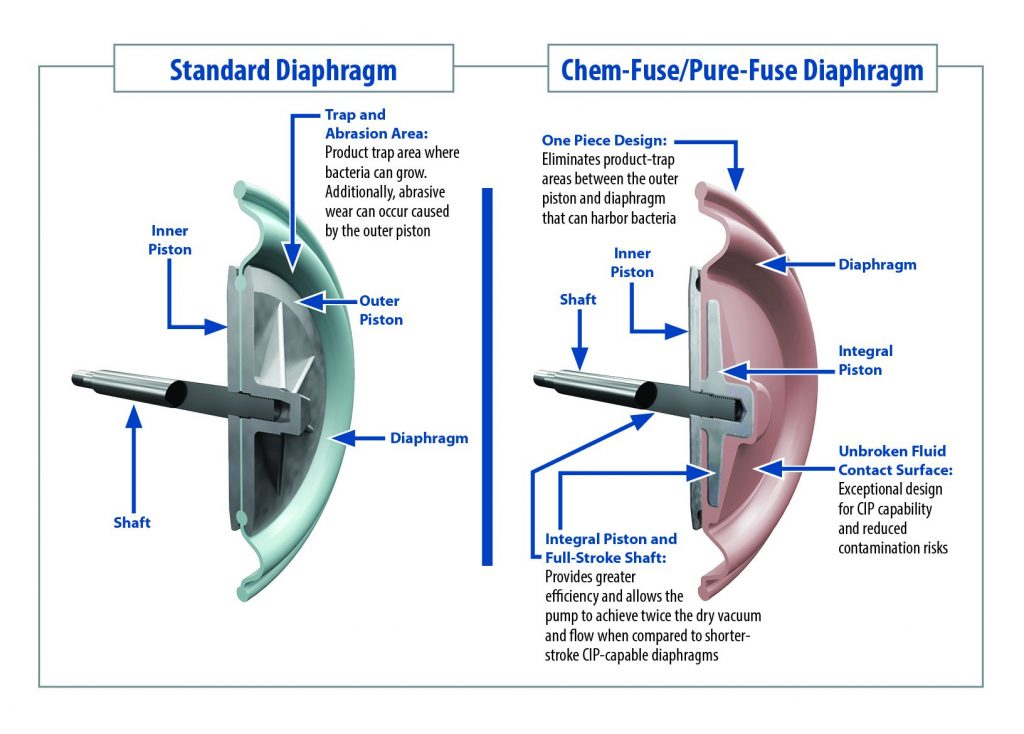 Wilden engineers have developed a unique IPD design that uses the same hardware as standard full-stroke diaphragms, which means there is no tradeoff in performance when using a Wilden IPD. Specifically, Wilden has designed two new models of IPDs, both of which can achieve a traditional stroke length that will optimize flow rates, suction lift and efficiency.
Wilden engineers have developed a unique IPD design that uses the same hardware as standard full-stroke diaphragms, which means there is no tradeoff in performance when using a Wilden IPD. Specifically, Wilden has designed two new models of IPDs, both of which can achieve a traditional stroke length that will optimize flow rates, suction lift and efficiency.
Chem-Fuse Diaphragms from Wilden deliver an elevated level of pumping performance, which makes them ideal for high-volume chemical and industrial liquid-handling applications. Most significantly, elimination of the potential leak point at the outer piston makes Chem-Fuse diaphragms the best choice when the application involves the transfer of critical, dangerous, toxic or hazardous liquids.
Pure-Fuse Diaphragms have been designed specifically for hygienic applications. They feature a one-piece design that eliminates notorious trap areas between the outer piston and the diaphragm, which can encourage the growth of bacteria. The Pure-Fuse design also eliminates the typical abrasion wear caused by the outer piston in a traditional diaphragm, resulting in longer service life. Additionally, no adhesive is used in the Pure-Fuse diaphragm’s construction, which makes it a perfect choice for hygienic and sanitary liquid-handling applications.
Over the years, the diaphragms that play such an important role in the operation of AODD pumps have undergone some very meaningful revisions in their designs and materials of construction. Wilden has contributed to this “path for the diaphragms of the future” by creating the Chem-Fuse and Pure-Fuse IPDs, which have already begun to leave their mark on many critical liquid-handling applications in the chemical and hygienic/sanitary markets.
About Wilden®:
Jim Wilden revolutionized the pumping industry when he invented the air-operated double-diaphragm (AODD) pump in 1955. Since that time, Wilden® Pump and Engineering Company has been at the forefront of bringing AODD technology into the future by building its extensive infrastructure, knowledge base and intellectual capital. Wilden offers a comprehensive line of safe, reliable and energy-efficient AODD pumps – including the Pro-Flo® SHIFT Series, Pro-Flo® Series and Specialty Series – for critical pumping applications in the general industrial, paints and coatings, oil and gas, chemical process, water and wastewater, hygienic, mining, ceramics, and military and marine markets. Additionally, Wilden offers the largest selection of AODD diaphragms in the world to ensure your unique application demands are fully met. Headquartered in Grand Terrace, CA, USA, Wilden is part of PSG®, a Dover company. To learn more about Wilden, please visit wildenpump.com.

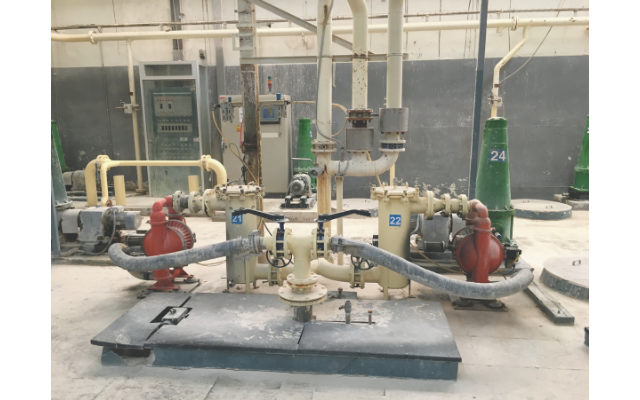
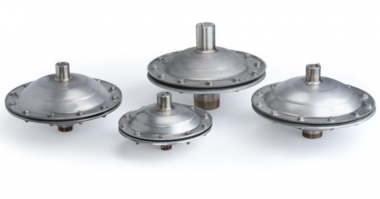
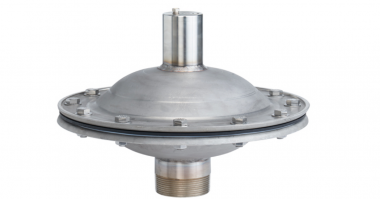
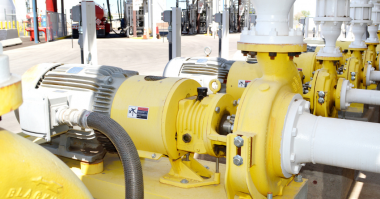
Comments